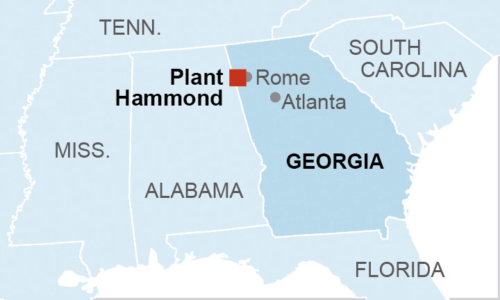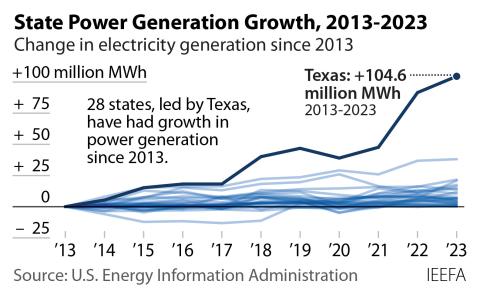IEEFA Update: Full Retirement of Plant Hammond Remains the Best Outcome for Georgia Ratepayers

 “Economic and market conditions” are the reasons cited by Georgia Power authority this week in announcing it will cut about half the 140-employee staff at the coal-fired Plant Hammond in the Northwest part of the state.
“Economic and market conditions” are the reasons cited by Georgia Power authority this week in announcing it will cut about half the 140-employee staff at the coal-fired Plant Hammond in the Northwest part of the state.
Georgia Power, however, is still struggling to accept that the plant ought to be completely shut down, and for good, because of those same weak “economic and markets conditions.”
As we outlined in a research report a year and a half ago—“George Power Company Should Retire Plant Hammond”—the fact is, the generating station can simply no longer compete. Its four units are from 45 to 62 years old, and all have outlived their usefulness in a world that is moving steadily toward cheaper, cleaner energy and away from coal.
As we said in a couple of technical points in our November 2015 report:
“Plant Hammond’s high costs are caused both by a decrease in generation at the plant and by significantly higher variable costs (fuel and non-fuel operations and maintenance). The amount of power generated by the plant has declined precipitously since 2007, when natural gas prices collapsed. As a result, electricity that probably would have been generated by Plant Hammond has been displaced by electricity produced at lower-cost natural gas-fired plants.”
The report described an array of trends aligned against Plant Hammond. Among them:
- “Natural gas prices are likely to remain very low for the foreseeable future;”
- “Georgia Power is on track to add 1,000 MW of new solar capacity by 2016 and more than 1,000 MW of new nuclear capacity by the early years of the next decade;”
- “There is little evidence to suggest that the company’s peak demands and energy sales will increase substantially in coming years.”
On that latter point, Georgia Power officials say they plan to keep the plant online as a backup, a strategy that would be maintained at the expense of customers. Again from our report:
“The cost of generating power at Plant Hammond already is very high compared to the cost of purchasing power from other plants. More important, due to dramatic declines in the cost of adding new solar and wind capacity, power generated by Plant Hammond already is much more expensive than buying power from utility-scale solar and wind projects through long-term (15- to 25-year) power purchase agreements. And the cost of generating power at Plant Hammond is likely to rise even higher in coming years as a result of costly upgrades to add cooling towers and effluent treatment controls.”
“In fact, by buying power from renewable sources rather than continuing to generate it at aging fossil-fired plants like Plant Hammond, Georgia Power will produce significant benefits for its customers and for the environment.”
“Plant Hammond is similar in several respects—in its coal burning technology, its age, its recent operating performance, and its recent production costs—to other plants Georgia Power has either retired in the past year or so or has announced it will retire.”
All of this is still true, and Georgia Power ratepayers would be best served—for “economic and markets conditions”—by a full shutdown of plant Hammond.
David Schlissel is IEEFA’s director of resource planning analysis.
RELATED POSTS:
IEEFA Update: Many Hurdles Facing U.S. Coal-Fired Power Fleet











